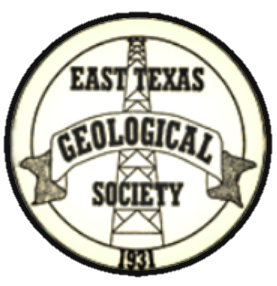SEPTEMBER 2017 LUNCHEON MEETING
Peter Soto-Kerans
of Total E&P Americas in Houston
presents
Resedimented deep-water model for Albian Glen Rose ‘D’ Alabama Ferry Oolite “Shoals”:
Lower Cretaceous Albian Platform Mixed Carbonate/Siliciclastic Strata of the Upper Glen Rose D Member, East Texas and Brazos Basins; Impact of the Houston Trough on Depositional Patterns and Facies Architecture
11:30 AM Wednesday, September 20, 2017
at the Cascades
4511 Briarwood Road
Tyler, TX 75709
Cost: $20
BIOGRAPHY
Peter Soto-Kerans
Peter Soto-Kerans is an Unconventional Exploration VIE Geologist for Total E&P Americas in Houston, TX. He is a Reservoir Geologist, with experience in unconventional exploration, exploitation, and production geology for the East Texas Basin and Permian Basin. Within East Texas, he has had the opportunity to analyze multiple stacked play prospects with focus on the Fort Trinidad and Alabama Ferry fields. He is an alumni of The University of Texas at Austin, Jackson School of Geosciences and a member of AAPG, Society of Exploration Geophysicists (SEG), Houston Geological Society (HGS), and the South Texas Geological Society (STGS).
ABSTRACT
Resedimented deep-water model for Albian Glen Rose ‘D’ Alabama Ferry Oolite “Shoals”:
Lower Cretaceous Albian Platform Mixed Carbonate/Siliciclastic Strata of the Upper Glen Rose D Member, East Texas and Brazos Basins; Impact of the Houston Trough on Depositional Patterns and Facies Architecture
by
Peter Soto-Kerans(1,2), Robert Loucks(2), Charles Kerans(1,2)
1) Jackson School of Geosciences, The University of Texas at Austin
2) Bureau of Economic Geology, The University of Texas at Austin
Intrashelf basins within broad shallow-marine carbonate platforms have been well documented, showcasing their dramatic impact on carbonate and siliciclastic facies architecture and depositional environments. Intrashelf basins are also loci of organic-rich carbonate deposits and that are associated with unconventional reservoirs (Grelaud et al. 2016). While controls on the creation of intrashelf basins vary as a result of both stratigraphic and structural influences, understanding their impact is crucial for prediction of depositional patterns and associated reservoir development.
The “Houston Trough” is defined here for the first time to recognize a half graben located near the intersection of the Brazos and East Texas Basins and which heavily influenced subsidence rates and depositional patterns of both Cretaceous and Tertiary deposits. The Lower Cretaceous Upper Glen Rose ‘D’ Member in the southern East Texas Basin, Brazos Basin, and Houston Trough, is a known producer of conventional hydrocarbons (e.g., Alabama and Fort Trinidad fields) and is currently an unconventional target. The Glen Rose D is composed of interbedded ooid and skeletal grain-dominated facies and siliciclastic mudstones, some of which are organic-rich. Reservoirs in the carbonate strata have been economic for many years and with the advent of oil and gas production from unconventional mudrock, the organic-rich argillaceous and calcareous mudrocks in the Glen Rose ‘D’ are now being evaluated.
Here, we use a suite of 1600 ft. of core from seven wells, over 300 vintage SP-Resistivity-Gamma Ray wireline logs, and a 290 km long dip-oriented seismic line that intersects a number of key tectonic elements including the East Texas and Brazos Basins as well as the newly defined Houston Trough.
The data for this study lie fifteen to forty km landward of the coeval Stuart City Reef margin and records the complex depositional patterns associated with syndepositional halokenisis and differential compaction. Previous studies of the Alabama and Fort Trinidad fields suggested a shallow-water wave agitated setting for the Glen Rose D strata, but observations from cores in this study which include sharp erosional contacts between ooid facies and intercalated mudstones, starved ripples within high-TOC mudrock, normally graded bedding, and absence of traction-current sedimentary structures favor a resedimented high-density turbidite model. The depocenter for these gravity flows is the previously undocumented Houston Trough. The new depositional model for this carbonate-siliciclastic trend that recognizes fan-like depocenters rather than strike-parallel ooid shoals may help guide additional exploitation of the Alabama Ferry trend.


